Cleaning and polishing silverware can be a daunting task, but with the right materials and techniques, it can be a breeze. As someone who loves to entertain and use my grandmother’s silver flatware, I’ve learned a thing or two about keeping it looking its best. In this article, I’ll share my tips and tricks for cleaning and polishing silverware so that it shines like new.
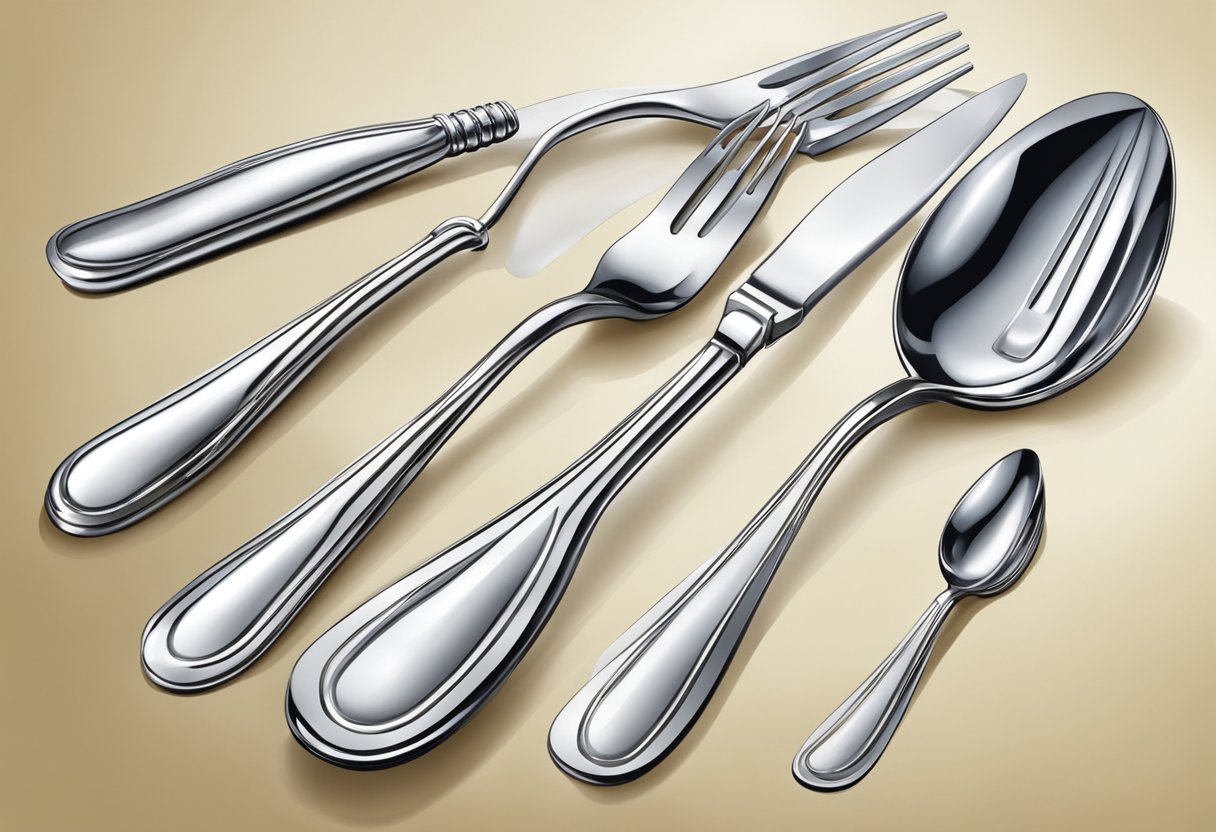
Understanding silverware is the first step in properly caring for it. Silverware is made of a metal alloy that contains silver, which is a soft metal that is easily scratched and tarnished. Tarnish is caused by a chemical reaction between the silver and sulfur in the air, which creates a dull, grayish-black film on the surface of the silver. While silverware is beautiful and elegant, it requires special care to maintain its luster.
Key Takeaways
- Understanding the composition of silverware is important for proper care.
- Tarnish is caused by a chemical reaction between silver and sulfur in the air.
- Special care is needed to maintain the luster of silverware.
Understanding Silverware
https://www.youtube.com/watch?v=HKbd0a2FM2k&embed=true
As someone who loves entertaining guests, I’ve always been fascinated by silverware. Silverware can be a beautiful addition to any table setting, but it can also be quite delicate and require special care. In this section, I’ll provide an overview of the different types of silverware and what you need to know about them.
Types of Silverware
There are several types of silverware, including sterling silver, silver-plated, and antique silver. Sterling silver is made up of 92.5% silver and 7.5% other metals, such as copper. It is considered the highest quality silverware and is often passed down as a family heirloom. Silver-plated silverware is made of a base metal, such as copper or brass, that is coated with a layer of silver. Antique silver is silverware that is over 100 years old and can be made of either sterling silver or silver-plated metal.
Caring for Silverware
No matter what type of silverware you have, it’s important to care for it properly to keep it looking its best. Here are some tips for caring for your silverware:
- Clean your silverware after each use to prevent tarnish from building up.
- Use a soft cloth or sponge and mild dish soap to clean your silverware. Avoid using abrasive materials or harsh chemicals.
- If your silverware is heavily tarnished, you can use a non-abrasive solution of warm water and mild dish soap to gently scrub it clean. Be sure to dry your silverware thoroughly with a soft cloth to prevent water spots.
- Store your silverware in a dry, cool place to prevent tarnish. You can also use anti-tarnish strips or airtight containers to help prevent tarnish.
- If you have antique silverware or a family heirloom, consider having it professionally cleaned and polished to avoid damaging it.
Conclusion
Understanding the different types of silverware and how to care for them can help you enjoy your silverware for years to come. With proper care, your silverware can be a beautiful and functional addition to your table setting.
What Causes Tarnish
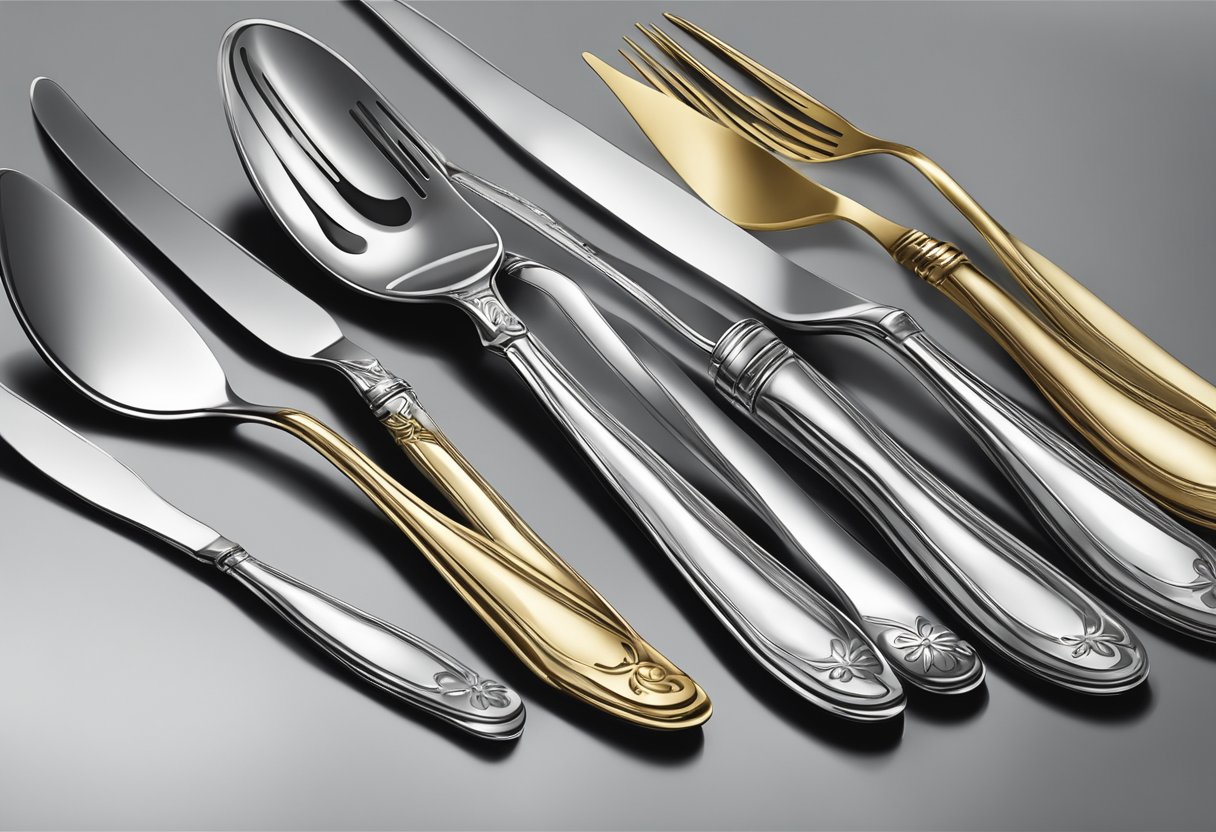
As someone who loves to entertain, I know how important it is to have sparkling clean silverware on hand for special occasions. However, it’s not always easy to keep silverware looking its best. One of the biggest challenges is tarnish, which can make even the most beautiful silverware look dull and unappealing.
Tarnish is a natural process that occurs when silver comes into contact with air and moisture. When silver is exposed to air, it reacts with hydrogen sulfide in the air to form silver sulfide, which is the black coating that we see on tarnished silverware. The amount of tarnish that forms depends on a variety of factors, including the humidity level in the air and the amount of hydrogen sulfide present.
One of the most important things to keep in mind when it comes to tarnish is that prevention is key. By taking steps to limit the amount of air and moisture that your silverware is exposed to, you can help to prevent tarnish from forming in the first place. For example, storing silverware in airtight containers or wrapping it in anti-tarnish cloth can help to keep it looking its best.
Another important factor to consider is the environment in which your silverware is stored. Humidity can play a big role in the formation of tarnish, so it’s important to store silverware in a dry, cool place. Avoid storing silverware in areas that are prone to moisture, such as basements or bathrooms.
Overall, understanding what causes tarnish is an important first step in keeping your silverware looking its best. By taking steps to prevent tarnish from forming and storing your silverware in a dry, cool place, you can help to ensure that it stays beautiful for years to come.
Materials Needed for Cleaning and Polishing
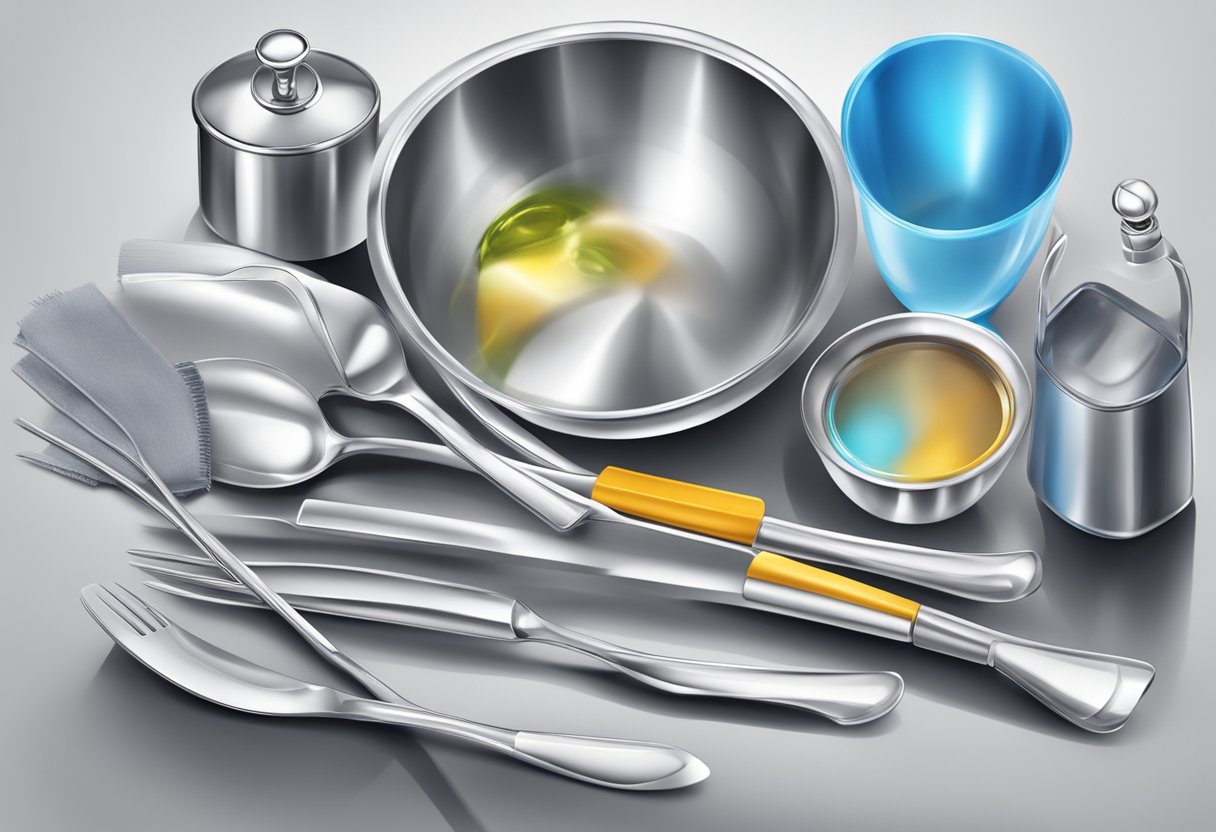
When it comes to cleaning and polishing silverware, there are several materials you will need to get the job done right. Here are some of the most commonly used materials for cleaning and polishing silverware:
- Polish: There are many different types of polishes available for silverware, including abrasive and mild polishes. Some popular brands include Blitz Silver Shine Polish and Wright’s Silver Cream.
- Baking soda: Baking soda is a natural cleaning agent that can help remove tarnish from silverware. It can be used in combination with other materials like aluminum foil and salt.
- Foil: Aluminum foil can be used to line a container for soaking silverware in a baking soda bath.
- Dish soap: A mild dish soap like Dawn Dishwashing Liquid can be used to clean silverware. Be sure to choose a citrus-free and phosphate-free dish soap.
- Salt: Salt can be used in combination with baking soda to create a paste for cleaning silverware.
- Vinegar: White vinegar can be used to clean silverware. It can be used in combination with baking soda and salt to create a paste.
- Toothpaste: Toothpaste can be used to clean silverware, especially if it has a mild abrasive like baking soda.
- Soft cloth: A soft cloth like a microfiber cloth or polishing cloth can be used to polish silverware.
- Cotton ball or swab: Cotton balls or swabs can be used to apply hand sanitizer or polish to silverware.
- Nitrile gloves: Gloves can be worn to protect your hands from chemicals and tarnish.
- Cellulose sponge: A cellulose sponge can be used to apply polish to silverware.
- Anti-tarnish strip: Anti-tarnish strips can be placed in a container with silverware to prevent tarnish from forming.
- Acid-free tissue: Acid-free tissue can be used to wrap silverware for storage.
- Lint-free cloth: A lint-free cloth can be used to dry silverware after cleaning.
- Soft sponge: A soft sponge can be used to clean silverware.
- Elbow grease: Sometimes all you need is a little elbow grease to polish silverware to a shine.
Overall, the materials you choose will depend on your personal preference and the level of tarnish on your silverware. With the right materials and a little bit of effort, you can keep your silverware looking like new for years to come.
Step-by-Step Cleaning Process
https://www.youtube.com/watch?v=8wPLWuy2O7M&embed=true
Cleaning silverware can be a daunting task, but with a few simple steps, you can make your silverware shine like new. Here’s how I clean my silverware:
- Start by filling a sink with hot water. Make sure the water is not too hot, or it could damage your silverware.
- Add a small amount of dish soap to the water. I find that a few drops of dish soap is enough to clean my silverware.
- Place your silverware in the sink and let it soak for a few minutes. This will help loosen any dirt or grime that may be stuck to your silverware.
- If you notice any water spots, you can remove them by rinsing your silverware with boiling water. Be careful not to burn yourself.
- After soaking your silverware, rinse it with warm water.
- If your silverware is still dirty, you can make a cleaning solution using pantry ingredients. Mix equal parts baking soda and water to form a paste. Apply the paste to your silverware and let it sit for a few minutes before rinsing it off with warm water.
- For stubborn stains or tarnish, you can use distilled white vinegar. Soak your silverware in a mixture of half water and half vinegar for a few hours. Rinse with warm water and dry immediately.
- If you prefer, you can also clean your silverware in the dishwasher. Just make sure to use a gentle cycle and avoid mixing silverware with other metals.
- After cleaning your silverware, make sure to dry it immediately to prevent water spots. You can use a soft cloth to dry your silverware or let it air dry.
By following these simple steps, you can keep your silverware looking shiny and new.
Step-by-Step Polishing Process
https://www.youtube.com/watch?v=xnnXbt7yfIw&embed=true
Polishing silverware can be a daunting task, but with a little elbow grease and patience, you can restore your silverware to its original shine. Here is a step-by-step guide to polishing silverware:
- Start by washing your silverware in warm soapy water to remove any dirt or debris. Be sure to dry your silverware thoroughly before moving on to the next step.
- Once your silverware is dry, apply a small amount of silver polish to a soft cloth. Rub the polish onto your silverware using small circular motions, making sure to cover the entire surface.
- Allow the polish to sit on the silverware for a few minutes, or as directed on the label.
- Using a clean, dry cloth, buff the silverware to remove the polish. Be sure to use a gentle, back-and-forth motion to avoid scratching the surface of your silverware.
- If your silverware has a heavy patina or tarnish, you may need to repeat the polishing process several times to achieve the desired results.
- Once your silverware is polished to your satisfaction, give it a final wipe down with a dry cloth to remove any remaining polish residue.
- Store your silverware in a cool, dry place to prevent tarnishing.
Remember, polishing silverware takes time and patience. Don’t rush the process, and be sure to take breaks if your hands start to tire. With a little effort, you can restore your silverware to its original shine and beauty.
Removing Stubborn Tarnish
https://www.youtube.com/watch?v=V-_2scQE0LE&embed=true
Sometimes, silverware can be heavily tarnished and require extra effort to clean. Here are some tips for removing stubborn tarnish from your silverware:
- Use a silver polish cream: Silver polish cream is a great option for removing stubborn tarnish from silverware. Apply a small amount of the cream to a soft cloth and rub it onto the tarnished pieces in a circular motion. Rinse the silverware thoroughly with warm water and dry with a soft cloth.
- Soak in vinegar and baking soda: If your silverware is heavily tarnished, you can try soaking it in a mixture of white vinegar and baking soda. First, line a bowl with aluminum foil and place the tarnished pieces inside. In a separate bowl, mix 1/2 cup of white vinegar with 2 tablespoons of baking soda. Pour the mixture over the silverware and let it soak for 2-3 hours. Rinse the silverware with warm water and dry with a soft cloth.
- Use a toothbrush: For hard-to-reach areas or intricate designs, use a soft-bristled toothbrush to gently scrub away the tarnish. Be sure to use a gentle touch to avoid scratching the silverware.
- Try a commercial tarnish remover: If all else fails, you can try using a commercial tarnish remover. Be sure to follow the instructions carefully and wear gloves to protect your hands.
By following these tips, you can remove even the most stubborn tarnish from your silverware and restore its shine and beauty.
Storing Silverware Properly
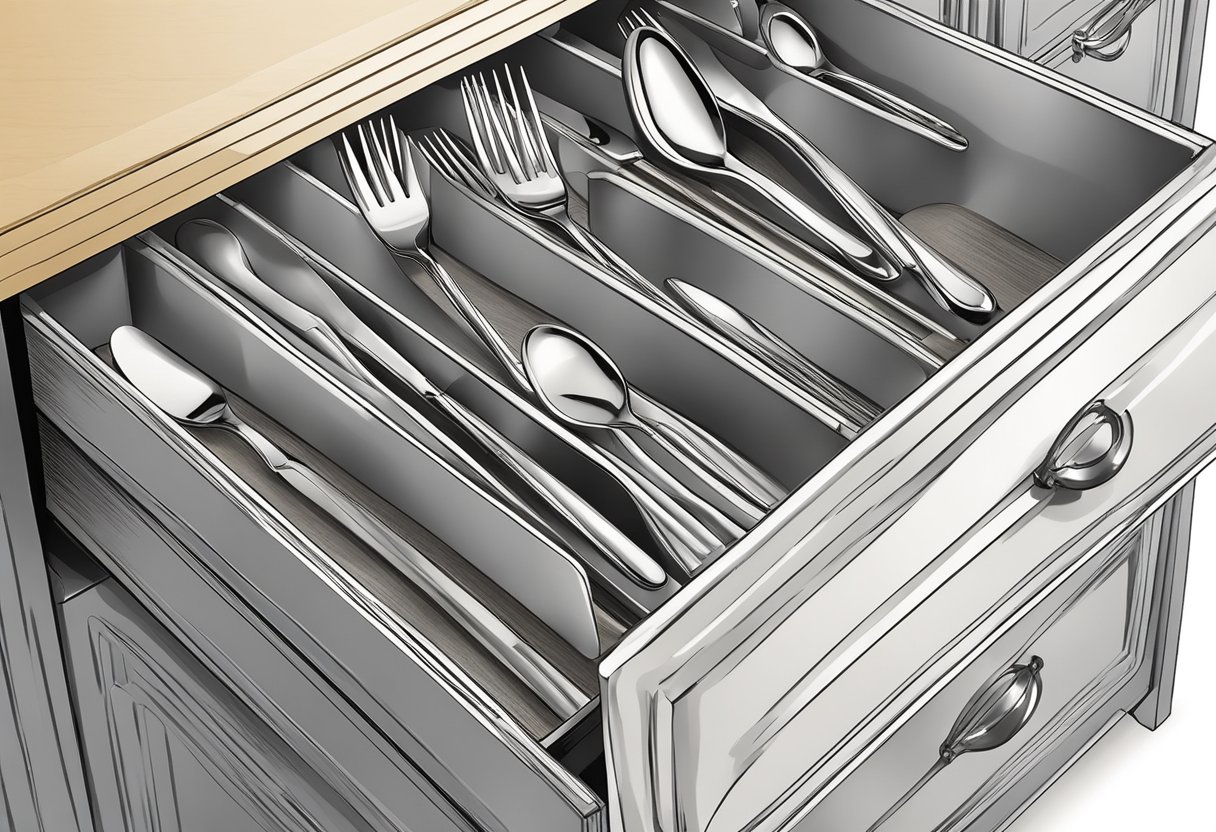
After cleaning and polishing your silverware, it’s important to store it properly to prevent tarnishing. Here are some tips:
- Store silverware in a dry, cool place away from direct sunlight. Moisture and heat can cause tarnishing.
- Use an anti-tarnish strip in your storage container. These strips are made of materials that absorb sulfur and other chemicals that can cause tarnishing. They are especially useful if you live in a humid area or if your silverware is stored in a basement or attic.
- Wrap each piece of silverware in acid-free tissue paper before storing. This will provide an extra layer of protection against tarnishing and scratches.
- Avoid storing silverware in plastic bags or containers, as they can trap moisture and cause tarnishing.
- If you don’t have an anti-tarnish strip, you can also store a piece of chalk or activated charcoal in your storage container. These materials can absorb moisture and chemicals that cause tarnishing.
By following these simple steps, you can ensure that your silverware stays shiny and beautiful for years to come.
Special Considerations for Silver Jewelry
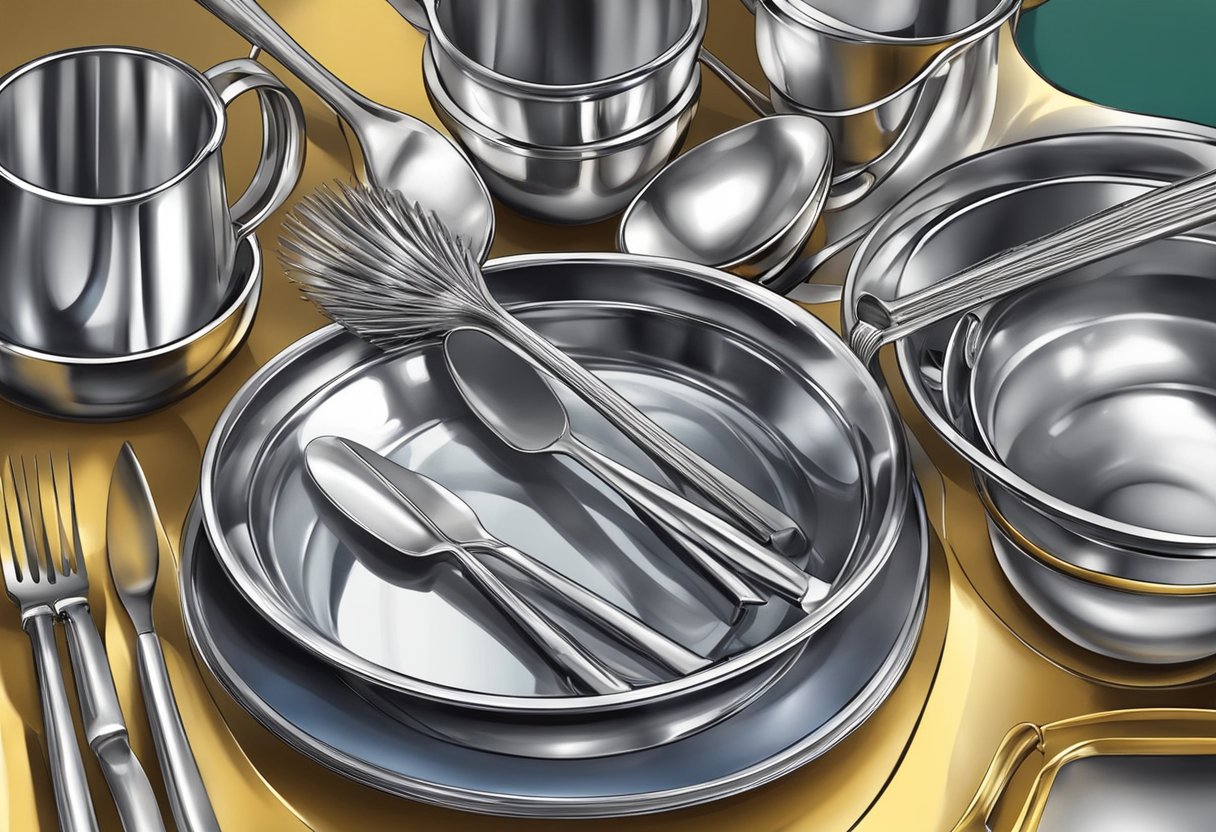
When it comes to cleaning silver jewelry, there are a few special considerations to keep in mind. Here are some tips to ensure that your silver jewelry stays looking its best:
- Avoid harsh chemicals: Silver jewelry can be sensitive to harsh chemicals, so it’s best to avoid using things like bleach or ammonia to clean it. Instead, opt for gentle cleaners specifically designed for silver jewelry.
- Be gentle: When cleaning your silver jewelry, be gentle. Use a soft cloth or a brush with soft bristles to avoid scratching or damaging the surface of the jewelry.
- Store it properly: When you’re not wearing your silver jewelry, it’s important to store it properly to prevent tarnishing. Keep it in a cool, dry place, and consider storing it in an airtight container or a jewelry box lined with anti-tarnish material.
- Consider professional cleaning: If your silver jewelry is particularly dirty or tarnished, you may want to consider taking it to a professional jeweler for cleaning. They have specialized tools and cleaners that can help restore your jewelry to its original shine.
Overall, taking care of your silver jewelry requires a little bit of extra effort, but it’s worth it to keep your pieces looking beautiful for years to come.
Caring for Silver Flatware
As someone who loves to host dinner parties, I know how important it is to have shiny and clean silver flatware. Here are some tips on how to care for your silver flatware to keep it looking its best.
Hand-Washing
To care for silver flatware, it’s best to hand-wash it. Avoid using the dishwasher as the harsh detergents can damage the silver. When hand-washing, use a mild dish soap like Dawn Dishwashing Liquid and warm water. Dry the flatware immediately with a soft cloth to prevent water spots.
Polishing
Over time, silver flatware can tarnish and lose its shine. To bring back its luster, use a silver polish like Wright’s Silver Cream. Apply a small amount of the polish to a soft cloth and rub it onto the flatware. Rinse the flatware with warm water and dry it with a soft cloth.
Storage
When storing silver flatware, make sure it’s in a dry place. Moisture can cause tarnishing. Use a tarnish-resistant cloth like Pacific Silvercloth to wrap the flatware. You can also store it in a chest lined with tarnish-resistant cloth.
Thanksgiving Tip
If you’re hosting Thanksgiving dinner, make sure to clean and polish your silver flatware a few days before the big day. This will give you enough time to fix any tarnishing or damage. Also, be sure to hand-wash the flatware after dinner to prevent any stains or tarnishing from setting in.
Dealing with Discoloration and Spots
https://www.youtube.com/watch?v=J9muR88tAmI&embed=true
If you’ve noticed that your silverware has become discolored or has spots, it’s likely due to tarnish or rust. Tarnish is a natural chemical reaction that occurs when silver comes into contact with air and sulfur. Rust, on the other hand, is caused by exposure to moisture.
To remove tarnish, I recommend using a silver polish such as Wright’s Silver Polish Cleaner, which is available for $5 on Bob Vila. Apply a small amount of the polish to a soft, dry cloth and gently rub it onto the silverware. Be sure to avoid any decorative or engraved areas, as the polish can remove these details.
For stubborn tarnish, you may need to soak the silverware in a solution of warm water and a few drops of dish soap for a few minutes before polishing. You can also try using a mixture of baking soda and water to form a thick paste and gently rub it onto the tarnished areas before rinsing and drying the piece thoroughly. Better Homes & Gardens recommends this method for removing rust spots as well.
If your silverware has spots that won’t come off with polishing or soaking, it may be due to pitting. Pitting occurs when the silver has been damaged by exposure to acidic foods or harsh chemicals. Unfortunately, pitting cannot be repaired, but you can still use the silverware for display or non-food purposes.
To prevent future discoloration and spots, be sure to clean and dry your silverware thoroughly after each use. Avoid exposing it to acidic foods or harsh chemicals, and store it in a dry, cool place away from direct sunlight. By taking these simple steps, you can keep your silverware looking shiny and new for years to come.
Frequently Asked Questions
What is the best home remedy to clean silver?
One of the best home remedies to clean silver is a mixture of baking soda and salt. Mix equal parts of baking soda and salt, and then add enough water to make a paste. Apply the paste to the silverware and rub gently with a soft cloth. Rinse with warm water and dry with a soft cloth.
How do you clean badly tarnished silver cutlery?
To clean badly tarnished silver cutlery, you can use a mixture of baking soda and vinegar. Mix 1/2 cup of white vinegar with 2 tablespoons of baking soda. Soak the silver cutlery in the solution for two to three hours. Rinse with warm water and dry with a soft cloth.
How do you clean and polish old silverware?
To clean and polish old silverware, you can use a commercial silver polish or a mixture of baking soda and water. Apply the polish or paste to the silverware and rub gently with a soft cloth. Rinse with warm water and dry with a soft cloth.
What do professionals clean silver with?
Professionals often use a commercial silver polish or a mixture of baking soda and water to clean silver. They may also use a specialized silver cleaning solution or a polishing cloth.
How to clean silver with baking soda and salt?
To clean silver with baking soda and salt, mix equal parts of baking soda and salt and add enough water to make a paste. Apply the paste to the silverware and rub gently with a soft cloth. Rinse with warm water and dry with a soft cloth.
How to clean silver with baking soda and vinegar?
To clean silver with baking soda and vinegar, mix 1/2 cup of white vinegar with 2 tablespoons of baking soda. Soak the silverware in the solution for two to three hours. Rinse with warm water and dry with a soft cloth.
